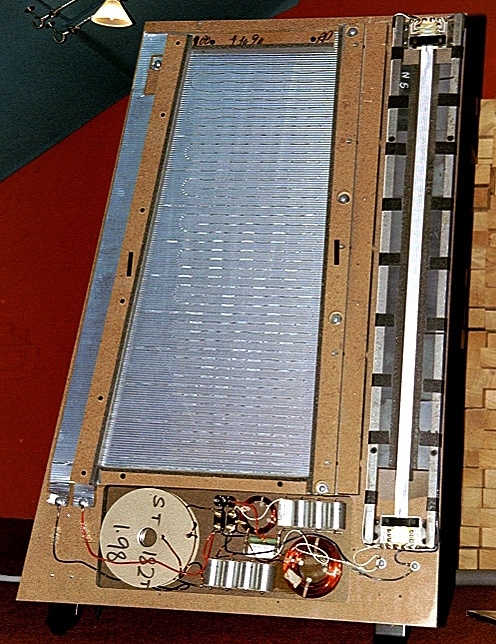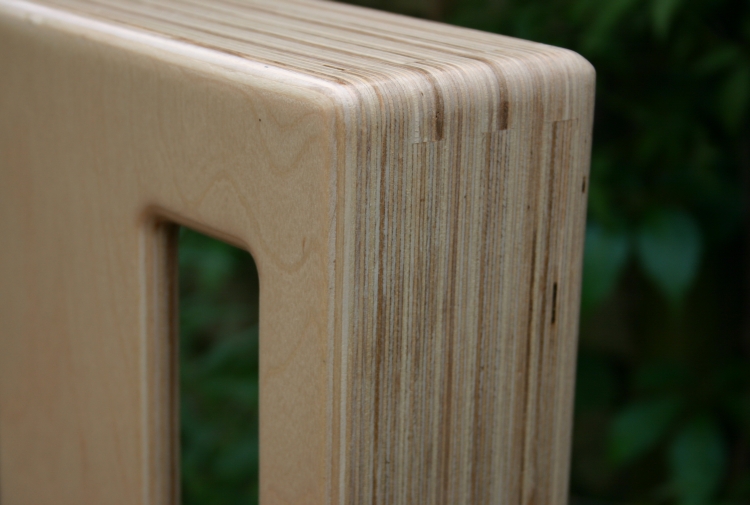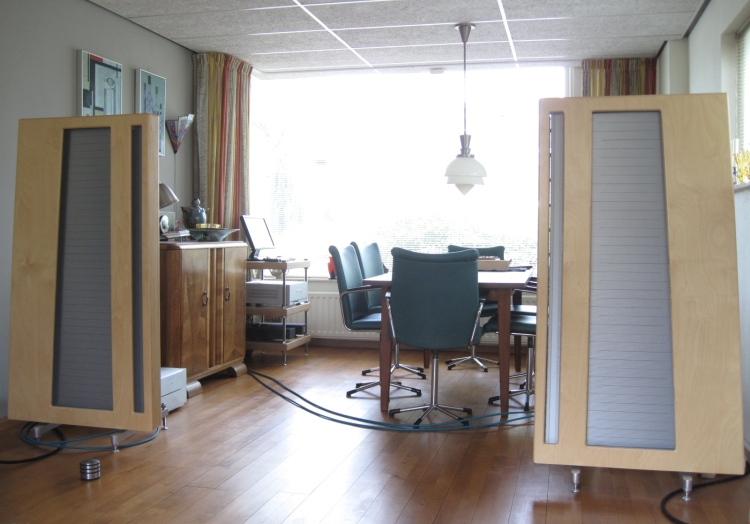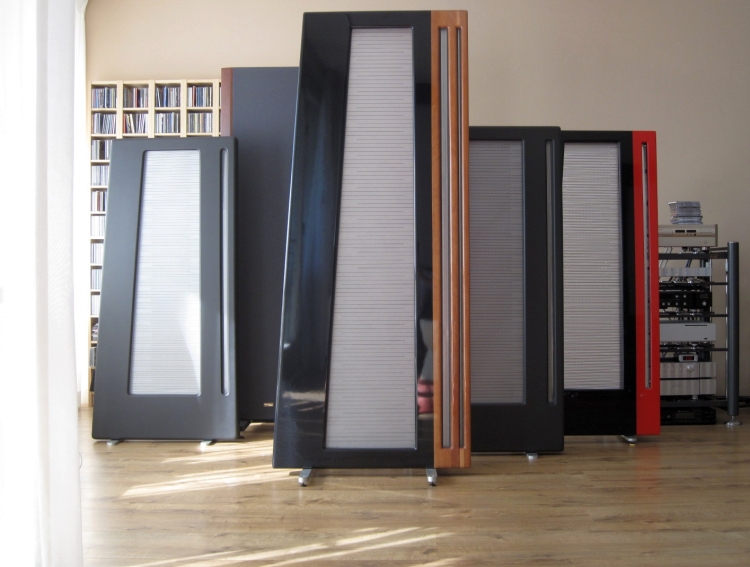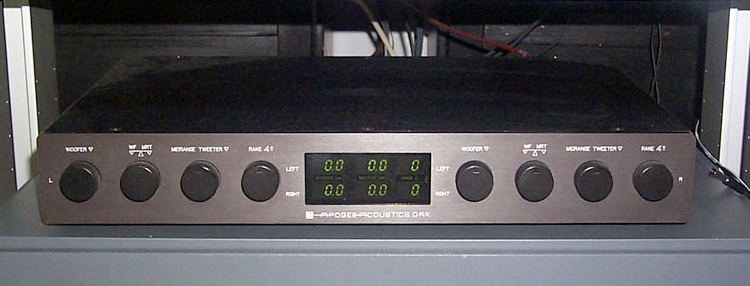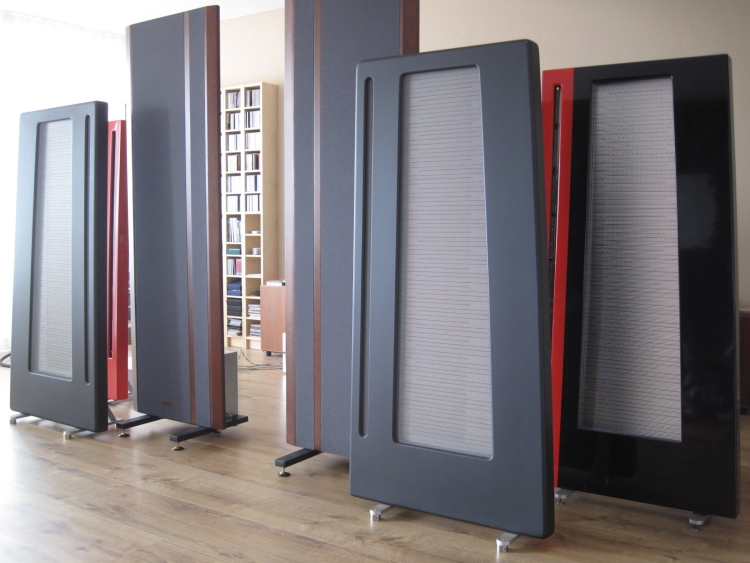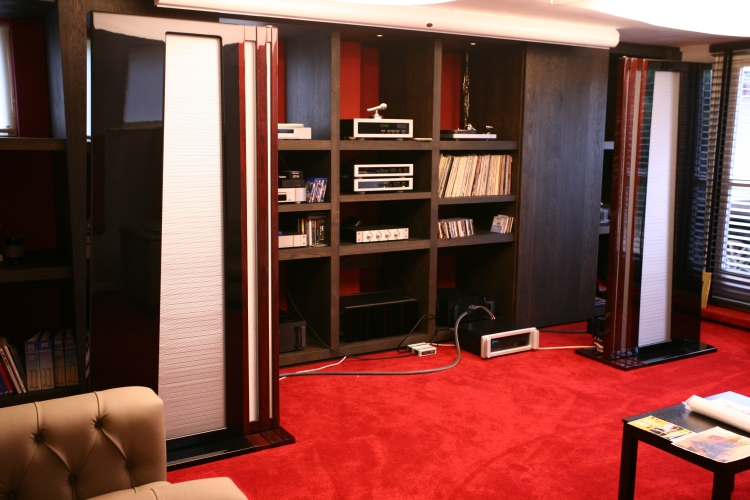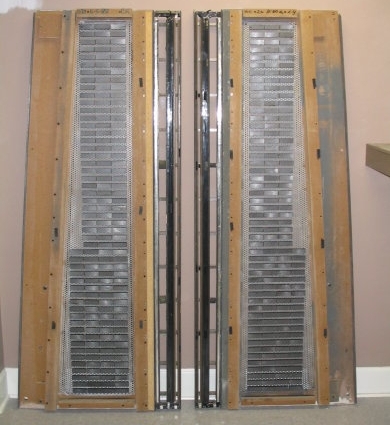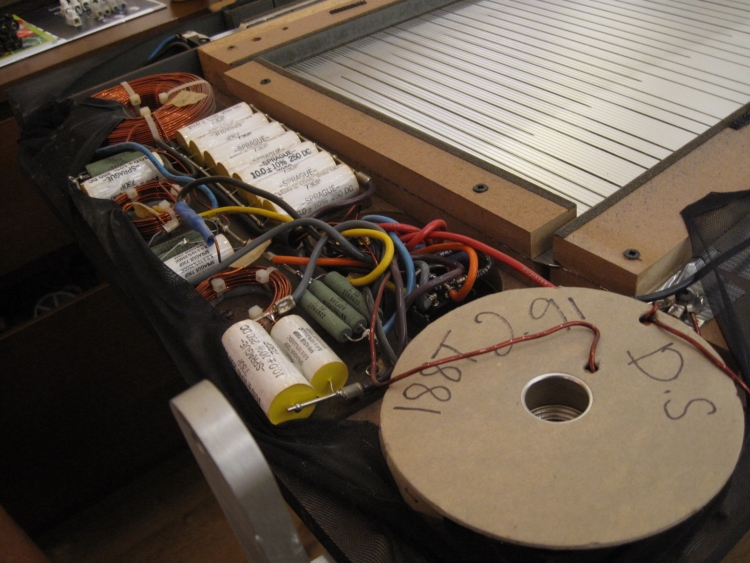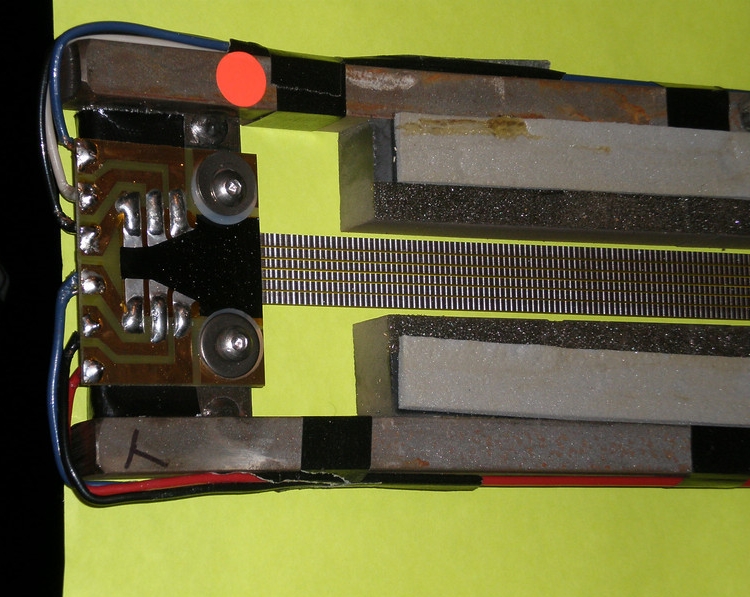
Inside Pictures of the Apogee Stage
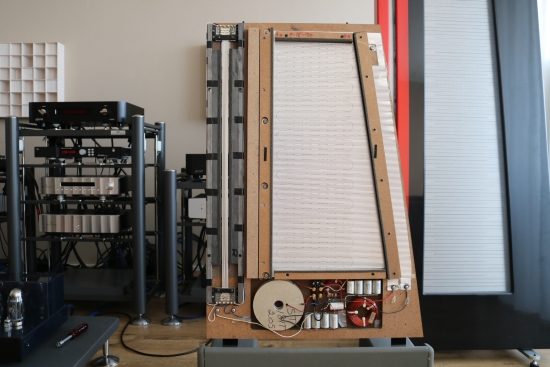
These Stages are on visit courtesy of audio buddy JC (aka Meneer Buis). Thankfully he is never worried about me opening his audio components so here are some very nice inside pics!
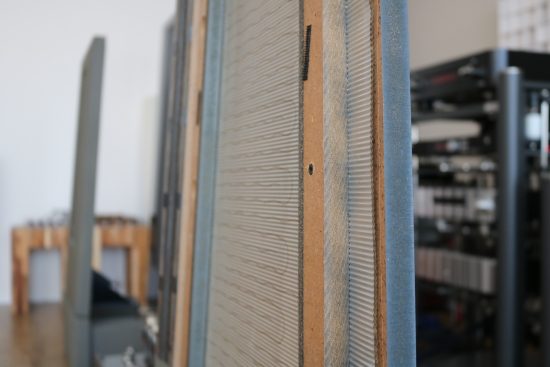
Notice how the foil is attached directly to the main frame rather than on wood struts, as with the Duetta?
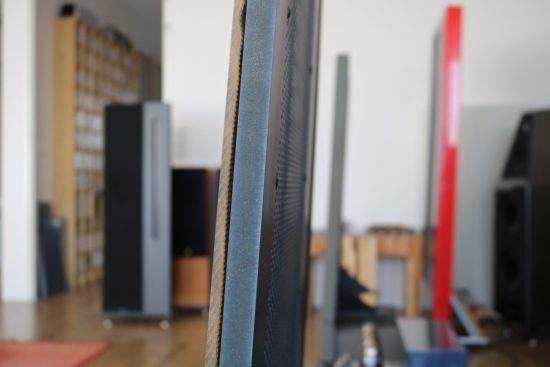
This is made possible because the metal roster holding the magnets is placed on the outside rather than on the inside of the frame.
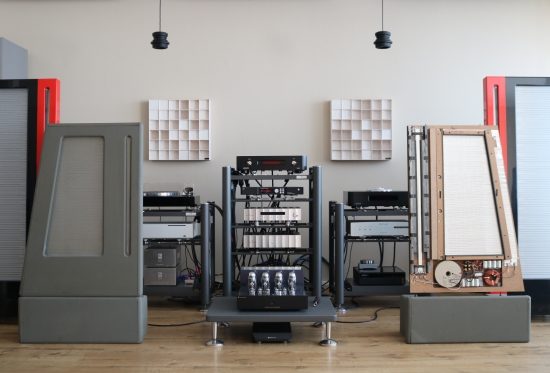
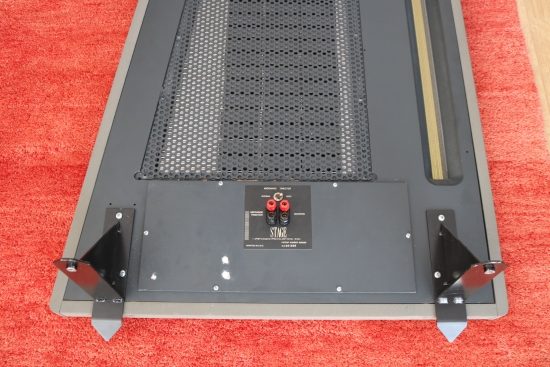
When trying to set up the Stages straight on the floor, the speaker is tilted backwards so much that it barely stays put and easily falls over, making the use of its pedestal mandatory unless one comes up with an after-market solution.
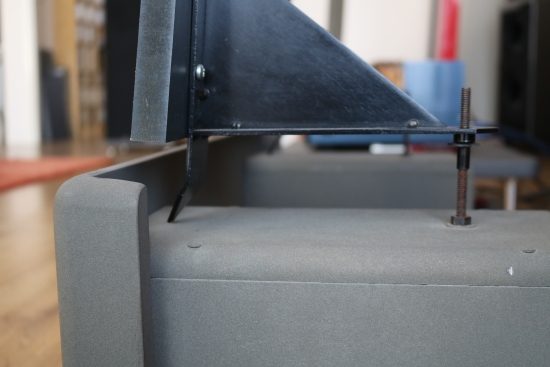
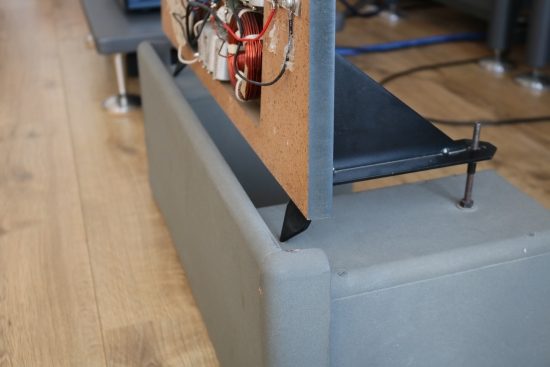
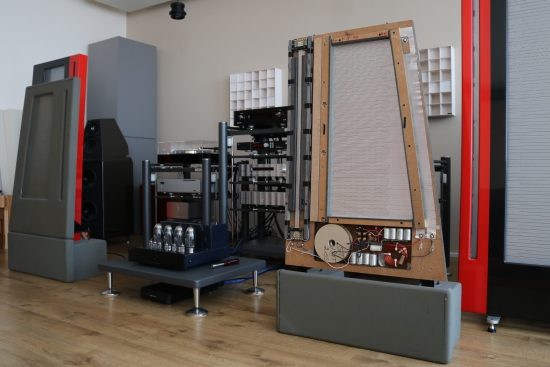
The Stages on their Pedestals. One could ask why include the Pedestal? Why not simply make the speakers’ baffle a little longer? I thought it might be to aid WAF when leaving out the pedestals, but due to the way that the speaker’s feet are constructed, they can only be used with the pedestals.
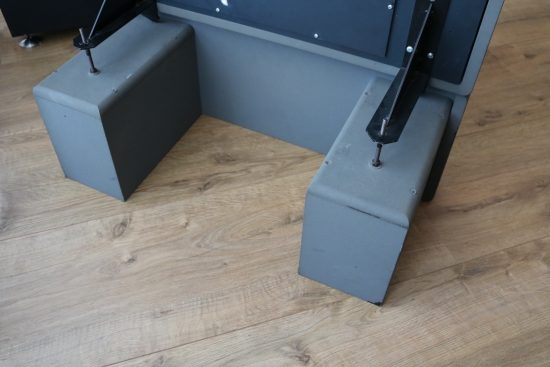
The MDF pedestals are filled with an unspecified very heavy material.
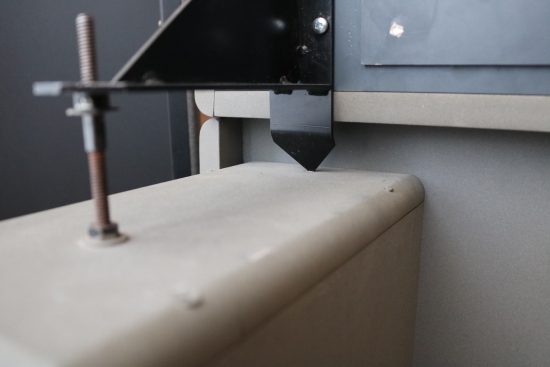
The front side of the speaker is supported by a metal bar that ends in a pointy triangle which stands right on the MDF pedestal.
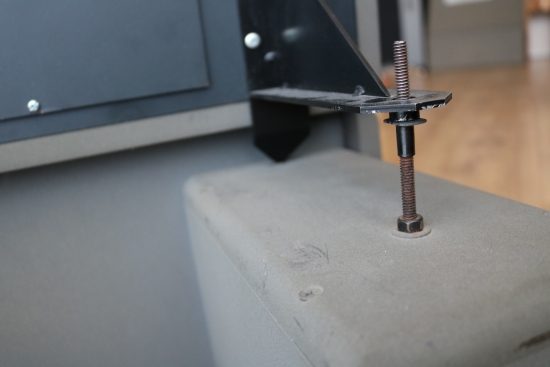
The height can be adjusted to change the speaker’s tilt, then fixed with a nut on top (not shown here)
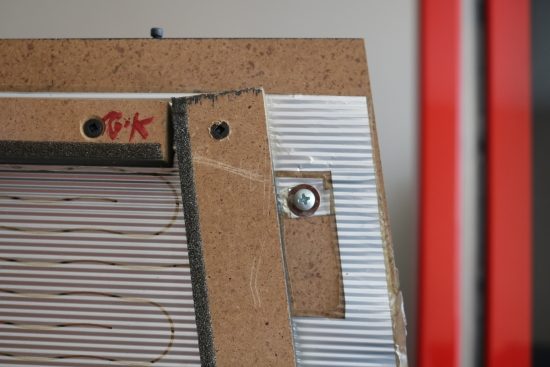
A seemingly non-connected screw at the top of the panel on JC’s pair. However, looking at other pictures found on the internet, this screw is never connected. I think it may simply connect the front and rear sides.
Above and below: two other original Stages with standard filters, seen from the front side, without cover
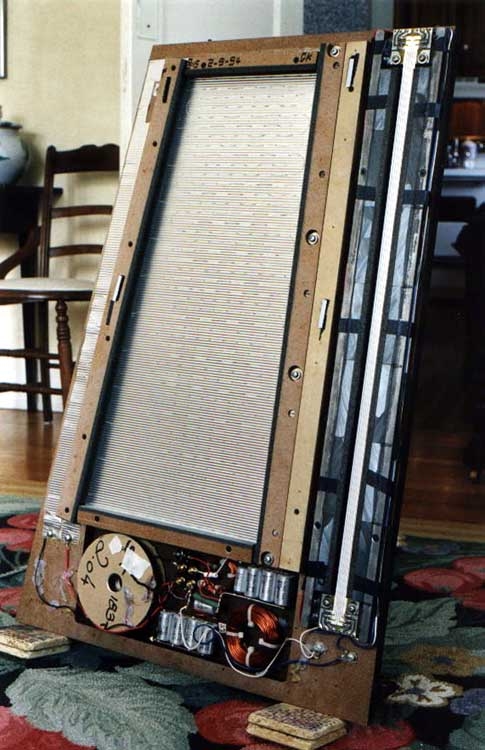
Back to JC’s pair, which really look immaculate inside. Even the foam is in really good condition.
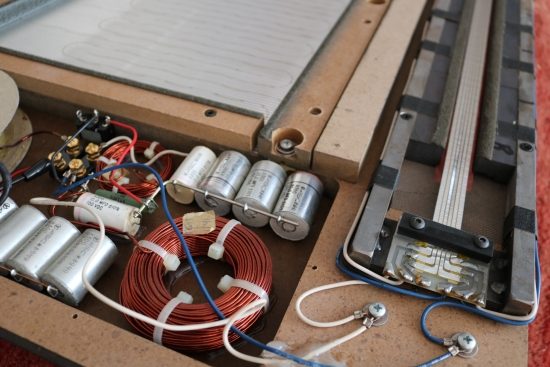
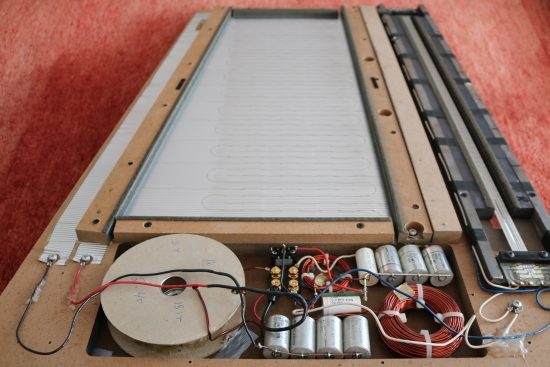
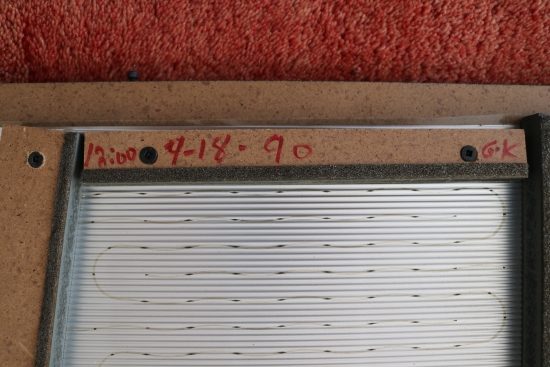
Above and below you can clearly see the wave-like patterns. This is JC’s pair, serial 001808, apparently made in 1990.
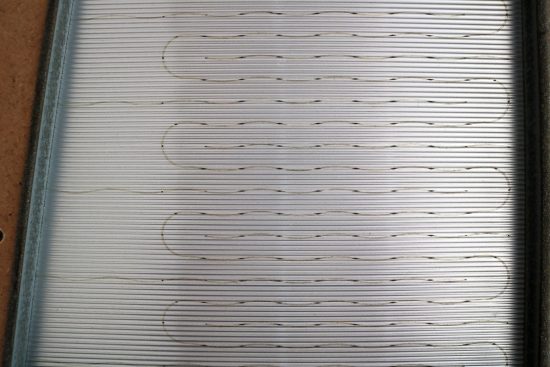
If you look closely, you can see the counter-curved foil on the other side.
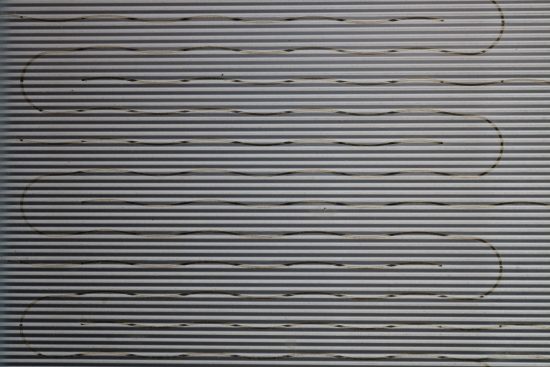
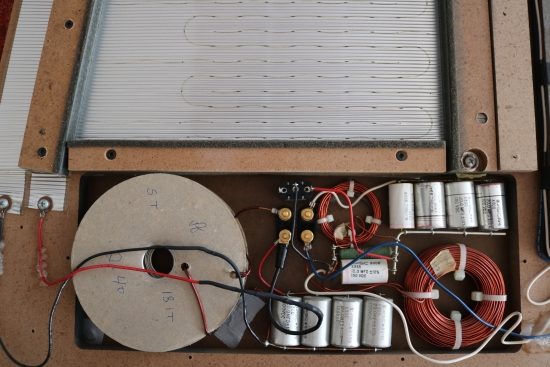
Above and below: Original Stage crossover. Above: JC’s pair and below a picture found on the internet.
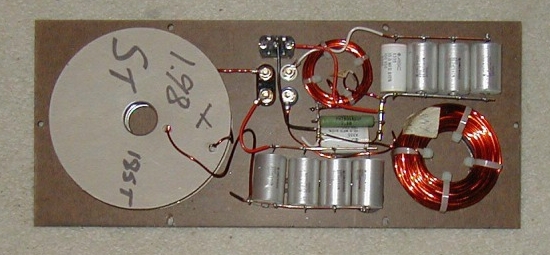
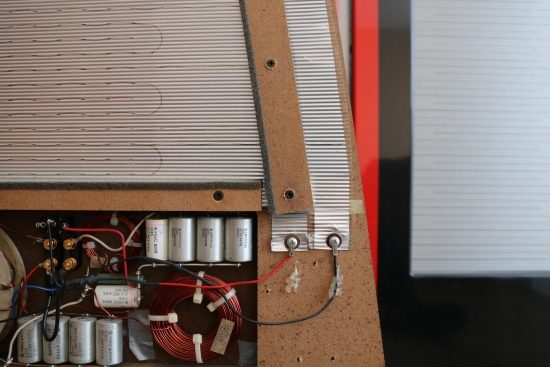
Above: JC’s pair – Bass panel connection
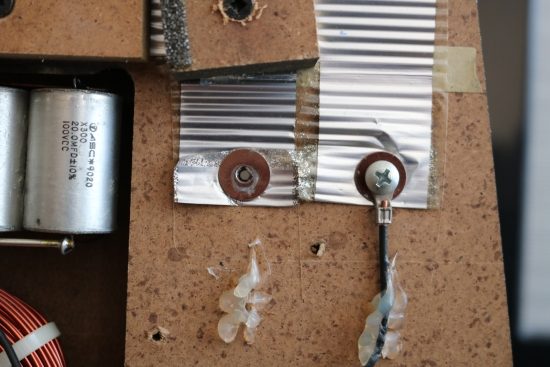
Looking up close I noticed that the washers were covered in rust. After unscrewing the lugs I was somewhat comforted when it was clear that the rust had not crawled in between the connection. Still, the contacts might benefit from a good cleaning.
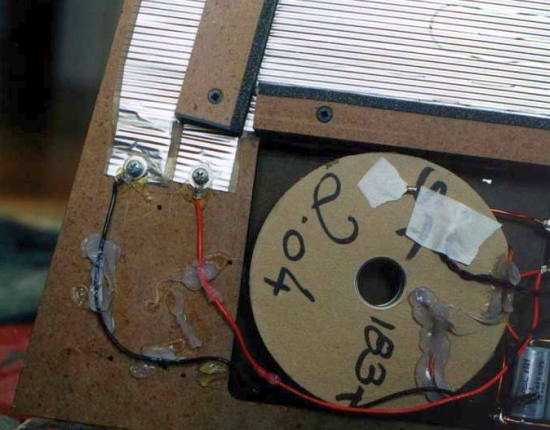
Above: a picture sourced from the internet, with the exact same connection method.
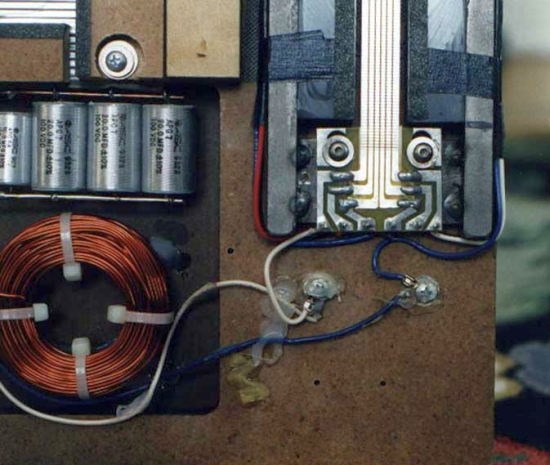
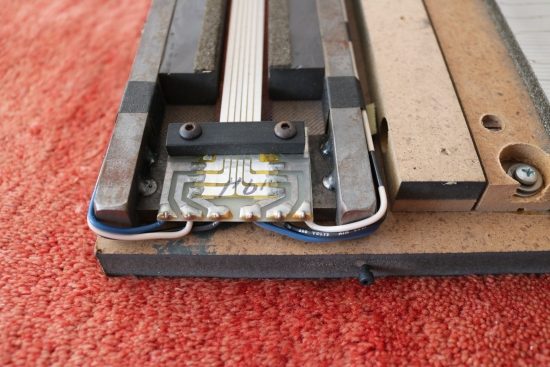
Above: treble connection (same ribbon as used for the Centaur)
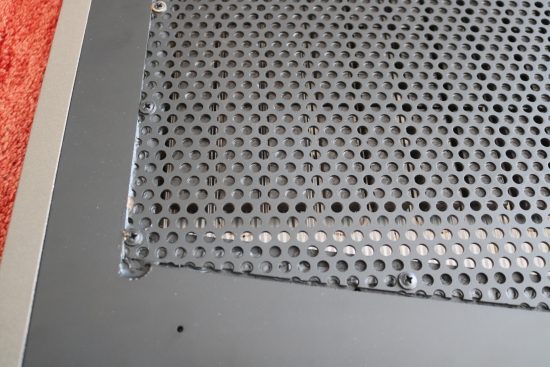
Above: as you can clearly see, the rear side of the mylar foil also has conductors on it. Unlike all other Apogees, the metal roster on the rear can be removed, if one is prepared to risk damaging the roster or the magnets when separating it from the adhesive.
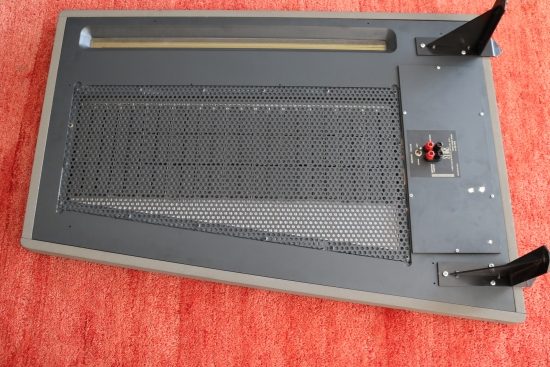
The individual magnets are the same size as those used for the Duetta Signature, but apparently with stronger magnetization. Alas, I have no way to confirm the latter.
More Stage
More Info (as well as a review)
